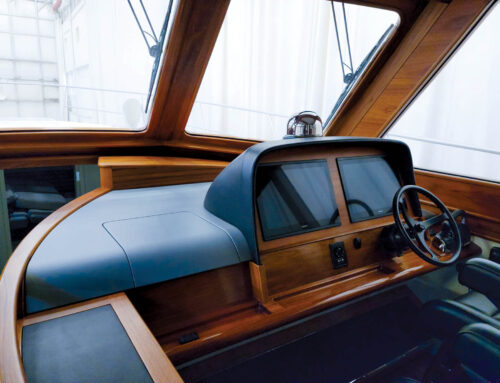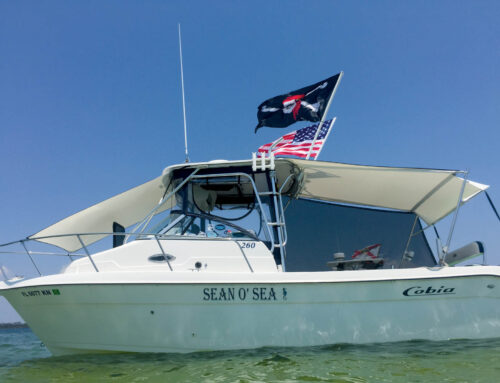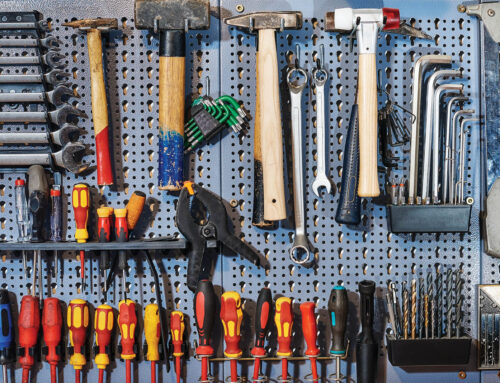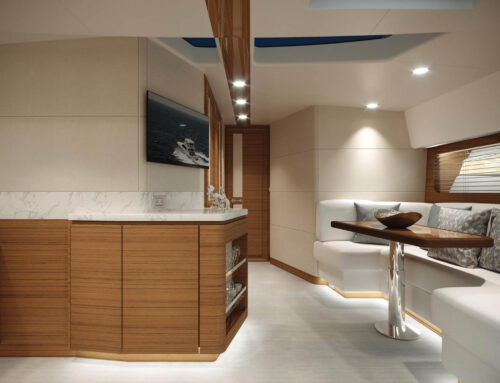Wake tower bimini smarts
By Clint Halladay
Here in Salt Lake City, Utah, towboats are king. We have a few lakes with cruisers, but for the most part, it’s day trips to the lake to play. We have one of the highest boat ownerships per capita in the country. Because of this, we have some of the biggest towboat dealers in the world nearby, and we have been lucky to build relationships with them. Many of these dealers rely on us to provide their customers with an overall better experience with their tower biminis. We have spent the past 20 years fine-tuning our tower biminis to make them both easy to build and quick for the boater to set up and use on the water.

Now, many people may feel the same way about tower biminis that we feel about biminis and enclosures. We don’t do a lot of them, and they slow down our shop. Like many other articles and fabricators (shout-out to Katie Bradford and Mark and Deb Hood) who have helped us, I hope to shed some light on what we do at SewLong Custom Covers so it can help your shop when you take on these kinds of projects. Sometimes it’s the inspiration of seeing a photo or a new piece of hardware that can make something click.
Framework design
The first step in building a wake tower bimini is to design your framework. We like to keep the framework as simple as possible. We don’t like telescoping parts, unnecessary struts or over-engineered setups. I recommend trying to keep it simple regardless of what style bimini you are comfortable building. Don’t be afraid to edit your framework down. Less is definitely more.
Keeping it as simple as possible provides two underappreciated benefits. The first is that it’s easier to build and uses fewer parts. The less time you spend building this top means you have more time available for other projects. The second benefit is that it will be easier for your customer to use.
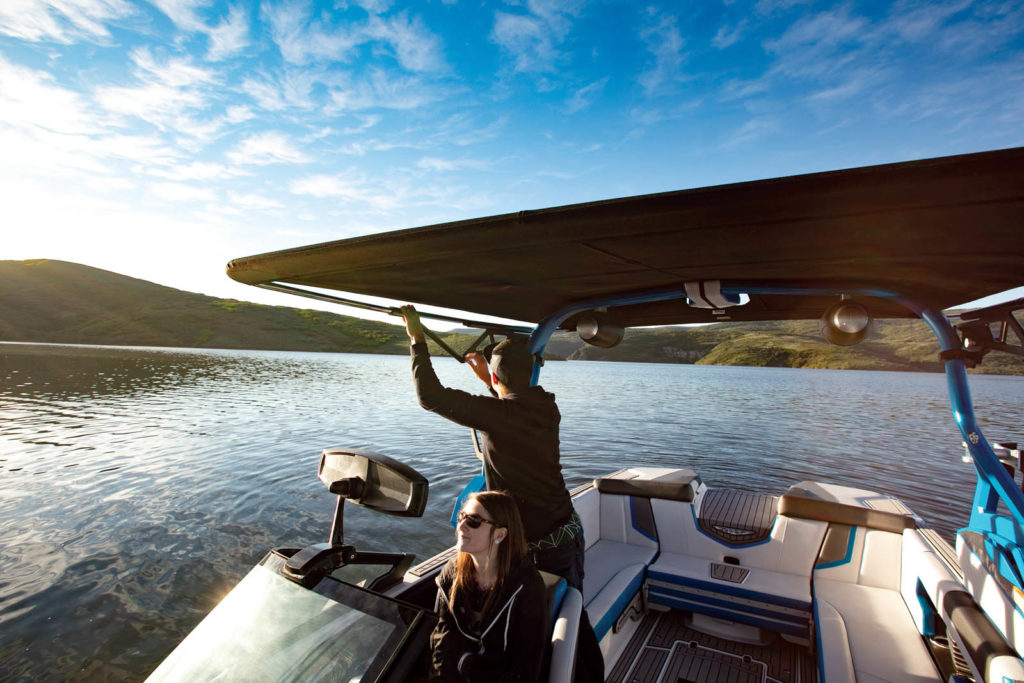
Size is important. Make sure this is part of your communication with the customer. Understand their expectations and make sure they know what you can deliver. We like our top to provide shade for the most important person in the boat: the captain. She is going to be towing the family all day, so let’s keep her comfortable.
Make sure your top isn’t going to interfere with the towrope coming off the tower. If not properly accounted for, the towrope can cause a lot of damage to both the canvas and the frame. The best way to handle this is to put a towrope on the pylon on the tower and pull it back to see what kind of clearance you have.
Make sure your framework fits the boat aesthetically and matches the angles of the tower. Chances are, one of the main reasons your customers bought the boat is because they like the way it looks, so use that to your advantage. We feel it looks better if the complete framework attaches only to the tower. Extra struts or poles attached to the boat deck take away from the tower design and impede dock accessibility and movement around the boat.
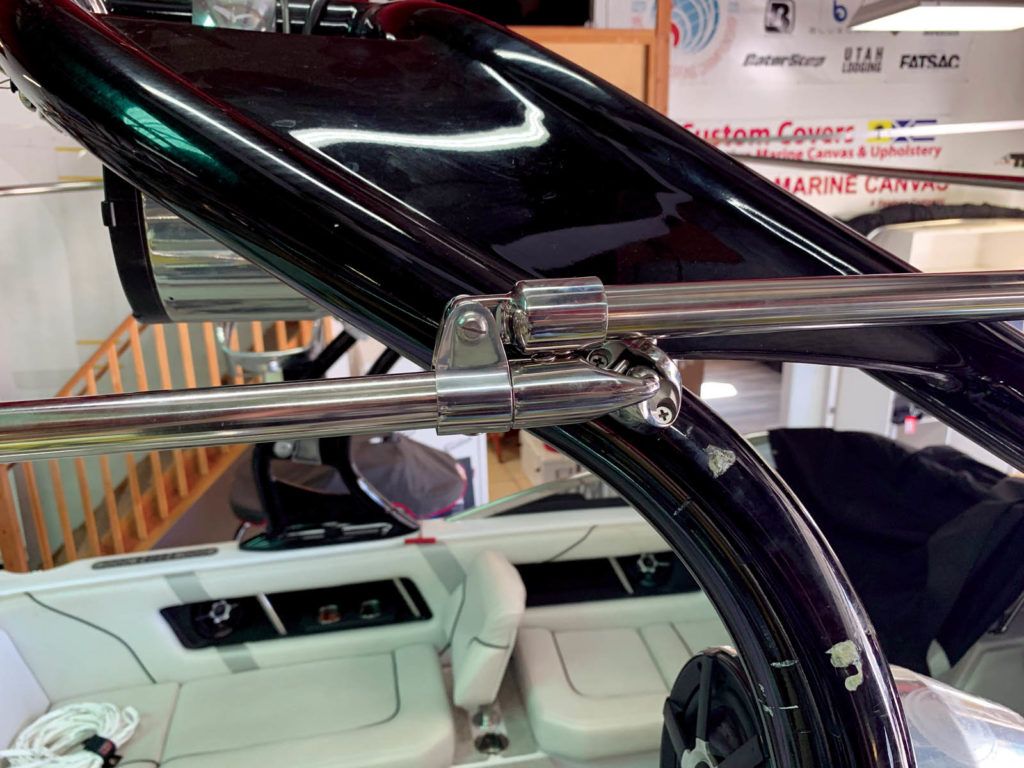
Hardware
Most bimini styles use standard and easily accessible hardware. Jaw slides and eye ends are among the most common and can be used in several ways (Photo 1 on page 42). Side mount deck hinges and tower claps are very helpful when mounting on the tower. The ball joint deck hinges give you more tolerance when working with tricky angles and can be very helpful.
We design a lot of our own hardware and it is an option for some people. Many shops are already designing covers in 3D, so it only makes sense to start exploring hardware. 3D printers have made it less expensive to test your designs before sending them to the fabrication shop. You can outsource the 3D printing or, like us, you can invest in your own. Adding this tool to our process has helped lower the cost of research and development as well as helped speed the process up. Who knows, you might have the next big idea that could add to our industry.
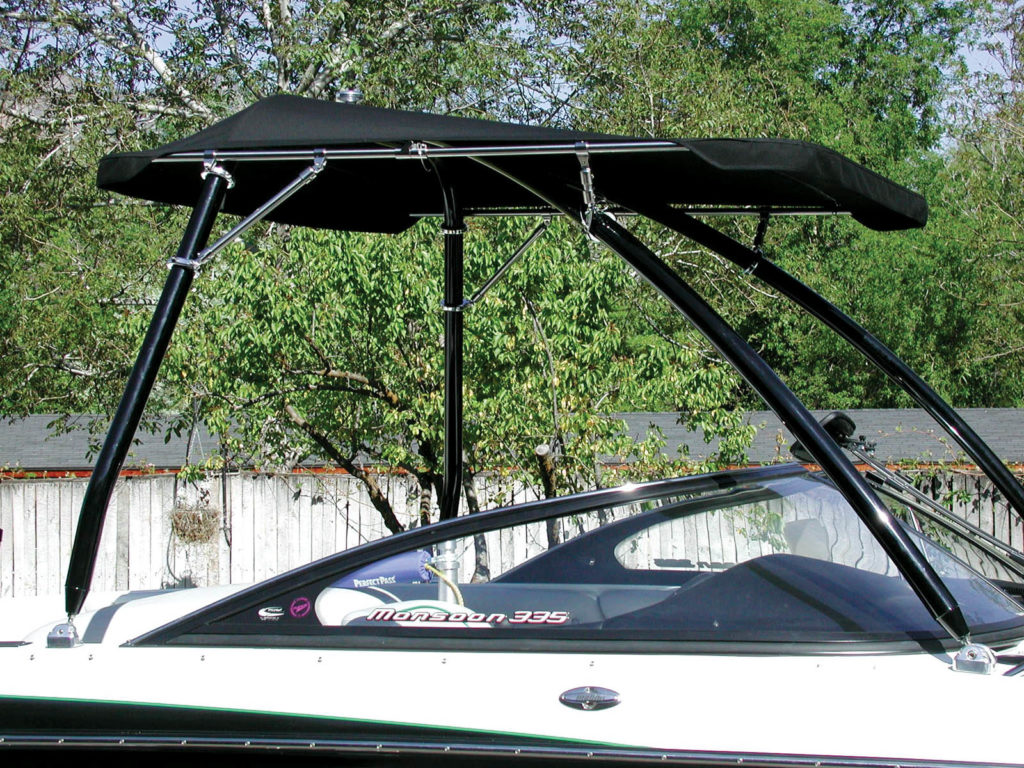
Tower bimini styles
Under the tower
Mounting the bimini under the tower is one of the most common styles of bimini to work with on a wakeboard tower. The most significant change with this style is the folding of the bimini; it needs to work within the tower. The limitation of the tower is your biggest enemy; it limits size, headroom and how you plan to fold and store the top while not in use.
Attached
This style is an adaptation of a commonly used style on bigger boats with radar arches. The attached biminis work great on A-frame or tuna-style towers, and oftentimes, the framework is the same shape as the tower and uses the tower as part of the framework. This style is a great option and a smooth transition for those who do lots of bigger boats. However, it is a bit harder to adapt this style of top to the newer style towers.
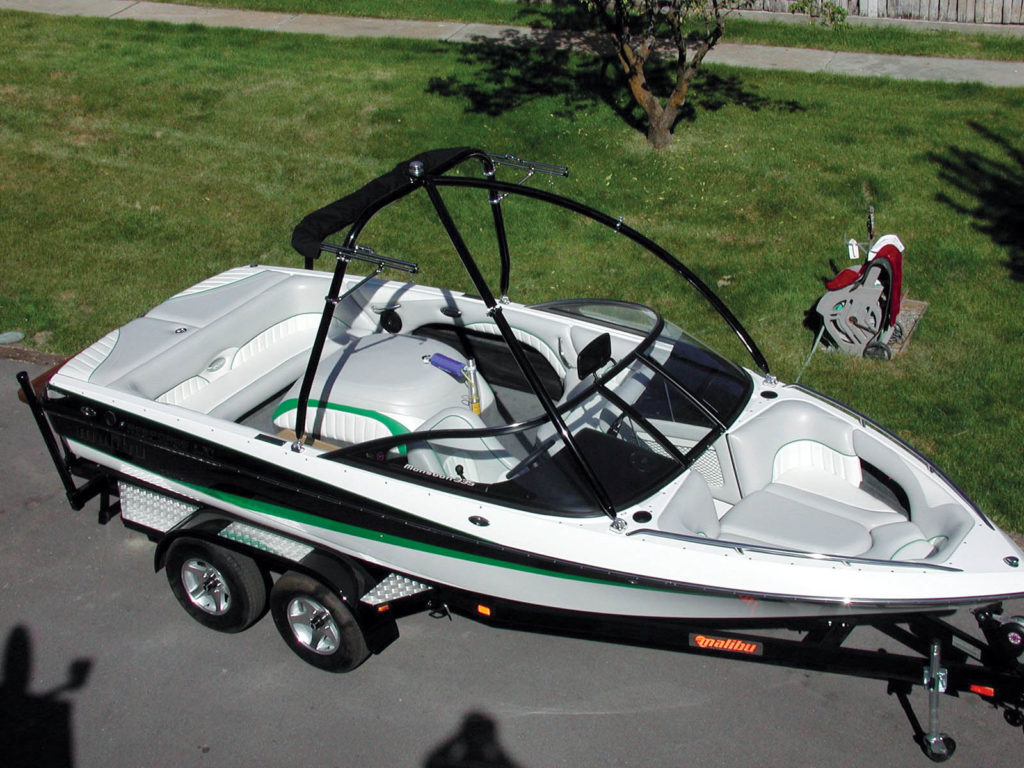
Rigid
Another style we are seeing a lot of is a rigid top. It can mount both above the tower and below the tower. This is great if your boat lives on the water and also allows for added storage. I would not recommend this style for anyone trailering their boat long distances. Our experience is that people don’t take the canvas off, and it ultimately gets destroyed.
Folding Canopy Top
The Folding Canopy Top (FCT) is our bread and butter. It mounts on the tower similar to both the rigid top and the attached bimini. The FCT opens and closes like a clamshell over the top of the tower. It’s easy to measure and build, and most importantly, it’s easy to use on the water.
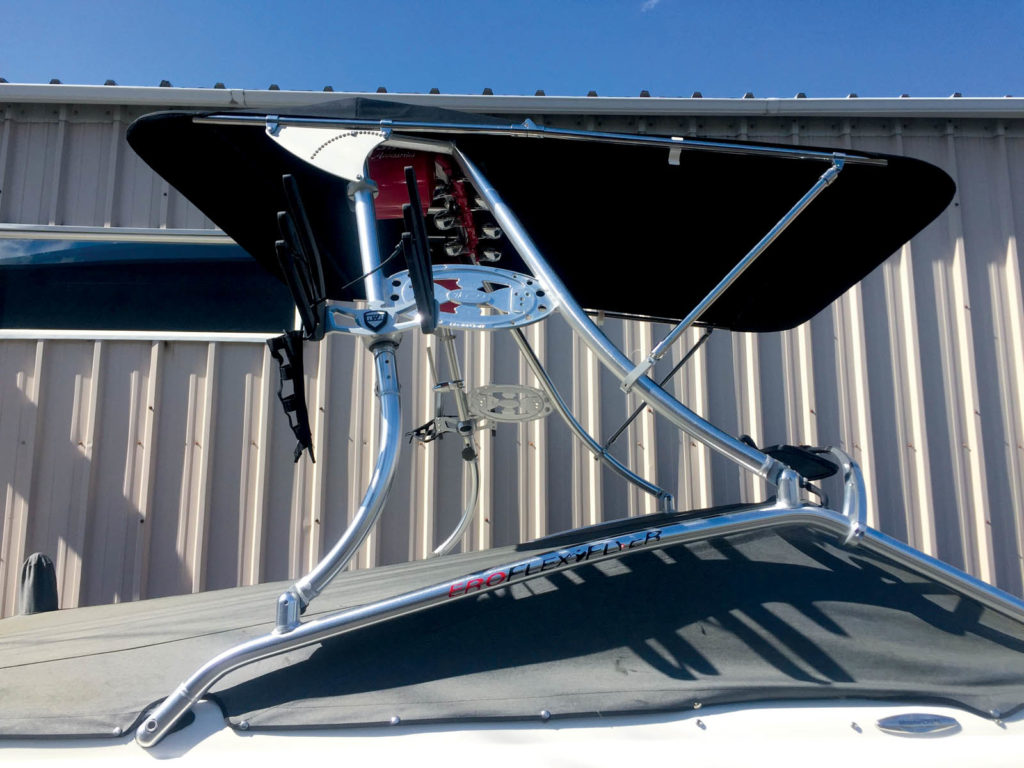
The framework is made of two identical bows with six jaw slides and two tubing hinges with two struts (Photo 4). We do manufacture our hardware, but the FCT can easily be made with readily available hardware. In the early days, we simply used what was available and even drilled and through-bolted the framework to the tower (Photo 2). Now that ball joint eye ends are available, you have even more options, and we have used them in special applications to help with customer requests.
Over the years and with thousands of tops on the water, the most common comment we hear is, “Your top is so easy to use.” That’s what people want the most. They don’t want to spend 20 minutes setting up a bimini. They want to launch the boat, open the top and be ready for fun. Just remember—less is more. If your design feels complicated, it probably is.
Clint Halladay is the production manager and lead fabricator at Sewlong Custom Covers. Over the past eight-plus years he has served under the tutelage of Justin Jones, Mark and Deb Hood, and Katie Bradford.
 TEXTILES.ORG
TEXTILES.ORG 


